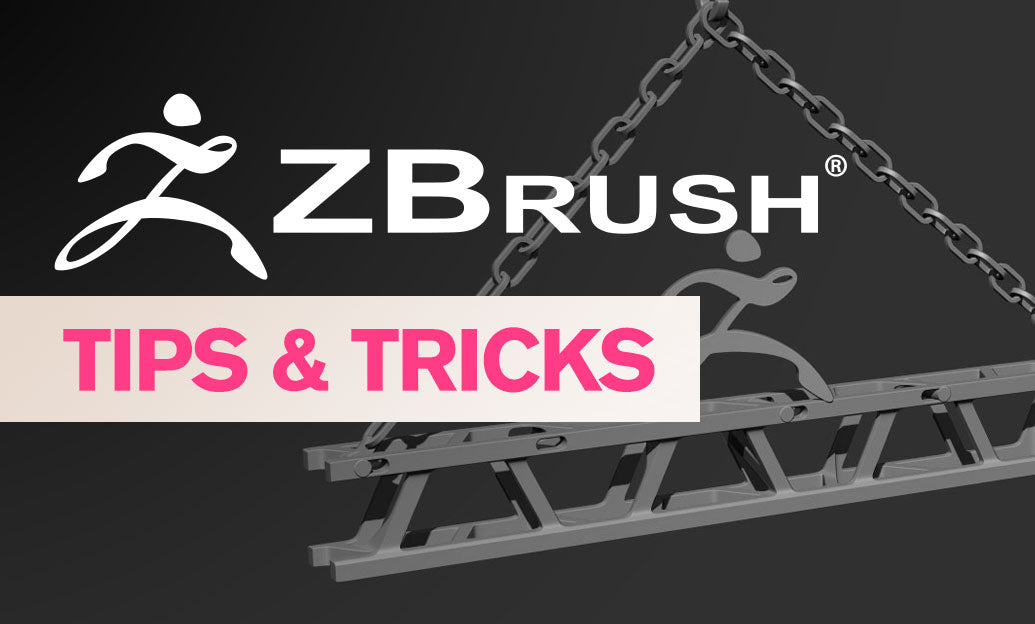Your Cart is Empty
Customer Testimonials
-
"Great customer service. The folks at Novedge were super helpful in navigating a somewhat complicated order including software upgrades and serial numbers in various stages of inactivity. They were friendly and helpful throughout the process.."
Ruben Ruckmark
"Quick & very helpful. We have been using Novedge for years and are very happy with their quick service when we need to make a purchase and excellent support resolving any issues."
Will Woodson
"Scott is the best. He reminds me about subscriptions dates, guides me in the correct direction for updates. He always responds promptly to me. He is literally the reason I continue to work with Novedge and will do so in the future."
Edward Mchugh
"Calvin Lok is “the man”. After my purchase of Sketchup 2021, he called me and provided step-by-step instructions to ease me through difficulties I was having with the setup of my new software."
Mike Borzage
ZBrush Tip: Optimizing Material and MatCap Application in ZBrush for Enhanced Realism
September 14, 2024 2 min read

In the world of 3D sculpting, mastering the setup and usage of materials and MatCaps in ZBrush can significantly elevate the realism and visual quality of your models. Here’s a comprehensive guide to effectively set up and utilize materials and MatCaps in ZBrush, aimed at helping you achieve professional-grade results in your projects.
Understanding Materials and MatCaps
Materials and MatCaps (Material Capture) are essential elements in ZBrush that define how light interacts with the surface of your 3D model. Materials are customizable shaders that respond to lighting in the scene, while MatCaps are material presets that hold both the material and lighting information.
Setting Up Materials
To begin setting up materials in ZBrush, follow these steps:
- Selecting a Material: Navigate to the 'Material' palette and choose from the wide array of materials available. You can find various options ranging from basic materials to more complex shaders.
- Customizing Materials: To customize a material, click on 'Material' > 'Modifiers'. Here, you can adjust numerous parameters including diffuse, specular, ambient, and more. Fine-tuning these settings helps in achieving the desired look for your model.
- Saving Custom Materials: Once you’ve customized a material, you can save it by clicking on 'Material' > 'Save As'. This ensures that you can reuse the same material in future projects.
Using MatCaps
MatCaps are especially useful for quickly applying complex material and lighting setups without manually adjusting shader parameters. Here’s how to work with MatCaps:
- Selecting a MatCap: In the 'Material' palette, scroll down to find the MatCaps section. Choose a MatCap that closely matches the material and lighting you envision for your model.
- Importing Custom MatCaps: If you have a specific MatCap that you want to use, you can import it by clicking on 'Material' > 'Load'. This allows for a high degree of customization and flexibility.
- Adjusting MatCap Properties: While MatCaps are generally less customizable than standard materials, you can still tweak some parameters such as colorize, transparency, and more by going to 'Material' > 'Modifiers'.
Combining Materials and MatCaps
For more advanced projects, you can combine multiple materials and MatCaps on different parts of your model using Subtools or masking techniques. This hybrid approach can yield stunning visual results.
Conclusion
Mastering the setup and application of materials and MatCaps in ZBrush can dramatically enhance the visual impact of your 3D models. By leveraging the versatility of materials and the convenience of MatCaps, you can create highly realistic and visually compelling works of art.
For more tips and professional tools, check out NOVEDGE, your go-to source for a wide range of 3D design software and resources.
You can find all the ZBrush products on the NOVEDGE web site at this page.
Also in Design News

💎 Rhino Artisan Arrives in Turkey: Revolutionizing Jewelry Design
February 27, 2025 1 min read
Read More
ZBrush Tip: Mastering Curve Surface for Unique Textures in ZBrush
February 27, 2025 2 min read
Read MoreSubscribe
Sign up to get the latest on sales, new releases and more …



